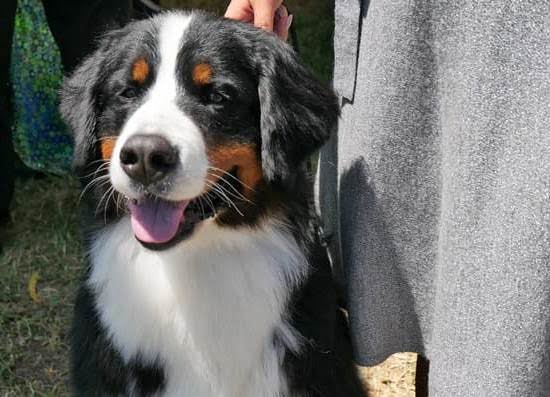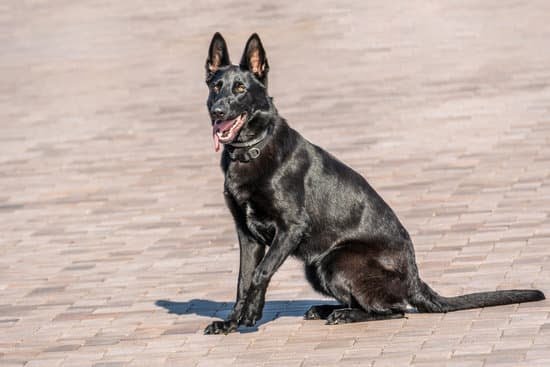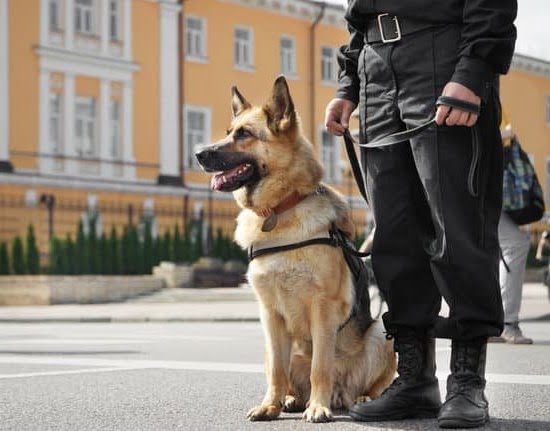Introduction
Service dogs are highly trained, specialized companions that provide assistance to people with disabilities. They help individuals with tasks such as balancing, carrying items, pulling a wheelchair, retrieving dropped items, and alerting medical issues like seizures and low sugar levels. Service Dogs are also capable of performing an array of other tasks that can help enhance the safety and independence of their persons.
One important factor in a Service Dog’s care is potty training. Without proper training and behavior, it would be extremely difficult for an owner to have a well-mannered service animal. Potty training for these animals takes consistency and patience on the part of their owners in order to successfully housebreak them. Owners must begin by referring to their Service Dog as a “canine citizen” so they understand the importance of following house rules such as regular toileting breaks at appropriate times in designated areas. Additionally, positive reinforcement methods should be used when potty training occurs so they learn quickly and respond positively when given commands during toileting breaks. After a successful housebreaking period, Service Dog owners will have successfully established communication with their animal and can trust them to follow guidelines during times of need.
Understanding the Basics of Service Dog Potty Training
Service dogs are typically potty trained, yes. Depending on the needs and amount of training a service dog receives, it will be taught where to “go” in different places like their handler’s home, a shop or other places in public.
A lot of handlers prefer to take potty training one step at a time so that their service dog is comfortable with one location before it is taken to another. This may involve taking its pup individual nursery area where they can concentrate on this one specific task as opposed to being distracted by all the other activity going on around them.
The length of time it takes for a service dog to learn potty training varies; for some dogs, it may just take a few days, while others may take much longer. To ensure success, cues are used to give the service dog more confidence and understanding when pottying. Training pads can also be set up inside the house in case an accident happens by mistake or any toileting need arises during inclement weather.
Overall, with patience, dedication and proper guidance from an experienced trainer or handler, any dog can become fully potty trained for both indoor and outdoor environments.
The Science Behind Potty Training
Service dogs are typically potty trained to a high degree. It takes a lot of dedication, patience and consistency for their handlers in order for the service dogs to learn their toileting needs and develop good habits. Potty training is done by bringing the dog to the same spot each time they need to “go” and rewarding them with positive affirmation when they do their business in the right place. This is helpful because it gives service dogs a way of communicating with their handlers when they have to use the bathroom. In addition, regular schedules and taking them outside before bedtime can help imprint this practice into their daily routine. Finally, positive reinforcement for choosing the appropriate area is key in order for them to associate relief with performing outside rather than inside. With these methods used consistently, service dogs can be effectively potty trained!
The Impact of Training on a Service Dog’s Wellbeing
Yes, service dogs are potty trained. This type of training is an important part of the service dog’s wellbeing. Potty training a service dog ensures that they remain clean and presentable at all times, so that they can provide the best possible assistance to their handler without distraction from bodily functions. Potty training also helps to keep facilities and public spaces clean, which allows the owners of these spaces to be more welcoming towards service animals and their handlers.
Potty training for a service dog can vary in complexity depending on the environment or task it will be performing. For example, obedience commands such as sit, stay, come and heel will help a dog stay focused on its duties even when there are distractions. Additionally, a service dog may need to learn specific behaviors related to their duties such as brushing against an object while navigating through a crowd or pulling objects towards its handler. Other areas where potty training may become important is with socialization skills, as well as being introduced to other people and animals. When done correctly and consistently with patience and consistency during early development stages, potty-training can help improve a service dog’s overall performance in various situations they may be faced with during working hours.
Different Training Techniques
Pros: Service dogs can be potty trained using positive reinforcement. This technique involves rewarding desired behaviors with verbal praise and food treats. Dogs learn by conditioning, so this is a great way to encourage them to keep their bathroom business confined to designated areas and increase their obedience.
Cons: While positive reinforcement is a great tool for house-training service dogs, some may resist the process or require intense, long-term disciplining in order to effectively train them. Additionally, there is the potential that rewards will cause the service dog’s behavior to become dependent upon their owner’s approval which can lead to insecurity or difficultly learning other commands.
Benefits of Proper Potty Training for Service Dogs
Yes, most service dogs are potty trained. Potty training service dogs is an important part of their preparation for life as a working companion. Proper potty training helps create good behaviors in service dogs and also helps them to maintain a clean environment.
Potty training provides many advantages for a service dog. For example, it ensures that the animal remains hygienic and free of disease causing pathogens like E coli and parasites which can be spread through urine or excrement left on the ground or other surfaces. Additionally, it reduces stress between owners and the dog since they no longer have to worry about accidents indoors or out. Proper potty training instills order into the environment, making it easier for service dogs to cooperate with the commands they receive from their handlers. Furthermore, it can help socialize the dog by encouraging them to wait outside when nature calls instead of leaving messes indoors and disrupting activities. Finally, having more control over their bodily functions gives service dogs added confidence, as well as strengthens their trust in you as their caregiver and handler.
Tips and Best Practices for Easier Potty Training
Yes, service dogs are usually potty trained. Potty training a service dog is an important and necessary skill they must learn to help their owners with everyday tasks. It can be challenging to train a service dog to pee and poo in the appropriate places, but it is not impossible. Here are some tips and best practices for easier potty training your service dog:
– Get started early with consistent training – this helps your service dog learn quickly where it is appropriate to go potty.
– Show your service dog the areas outdoors where it should go – use such words as “potty” or “do your business” when taking them out for walks so that you can get them into the habit of going outside when they need to use the bathroom.
– After going outside, reward your service dog with verbal praise and physical affection – this reinforces good behavior and encourages future success during training.
– Accidents happen – if accidents occur indoors despite being taken out frequently, don’t punish your service dog as this can confuse them and make toilet training more difficult. Instead, simply clean up the mess and take them out again shortly after in case they still need to complete their business outdoors.
Frequently Asked Questions about Service Dog Potty Training
Q: How is service dog potty training conducted?
A: Service dog potty training typically follows a process of consistent crate and house training, using rewards for positive behaviors. This includes taking the pup on regular potty trips to target areas, offering praise and treats when the pup eliminates in their designated area, and providing corrections for any errors. It can be helpful to establish a regular routine so that the pup learns when it’s acceptable to go potty in the right areas. Crate training is also usually part of a service dog’s potty training regimen, as it helps enforce house rules while simultaneously preventing any undesired behavior while unsupervised.
Q: Do all service dogs require potty training?
A: Yes, all service dogs must be properly trained to use only designated elimination areas, as this contributes greatly to their role as an adept support animal who can work in any environment without disrupting normal activity. For both the safety and efficacy of the animal, proper potty training should not be neglected or overlooked during the preparation process.
Case Studies
Yes, service dogs are potty trained to ensure that they are well-mannered and able to perform their duties in public. Professional trainers use different techniques for potty training service dogs, but all of the best practices involve consistency in both the training and rewards for appropriate behavior. First, it is essential to identify a designated spot where it’s okay for a dog to do its business—again, aiming for consistency is key. Similarly, positive reinforcement is important every time it makes a successful bathroom break there. All other areas should be off-limits. If needed, some trainers may even place puppies or adult service dogs in crates during training periods, which can help with housebreaking and create more control when necessary. It’s also important that owners provide structured exercise and regularly scheduled trips outside (after meals and naps) so that dogs understand that these designated places are meant only for the restroom. With practice and patience, potty training can be achieved in no time!
Conclusion
Potty training is an integral part of raising a service dog, as not only does it ensure that the dog can be taken places with minimal worry of them leaving messes behind, but it also teaches the dog proper deference to their handler. Potty training also helps create healthy routines and teaches the service dog habits that will make them easier to live with on a daily basis.
In addition to teaching the service dog proper behavior and creating a routine, potty training helps ingrain in them trust and respect for their owners. By following through with appropriate rewards after they complete their task correctly, the behavior gets ingrained in them quicker which makes them easier to manage over time.
Potty training is an invaluable skill for any service dog, one that plays an important role in keeping both the handler and the service animal happy and healthy. They are able to keep up with outings and other activities without having to clean up after themselves and have learned to trust their owners, making routine health care visits much easier for everyone involved.

Welcome to the blog! I am a professional dog trainer and have been working with dogs for many years. In this blog, I will be discussing various topics related to dog training, including tips, tricks, and advice. I hope you find this information helpful and informative. Thanks for reading!





